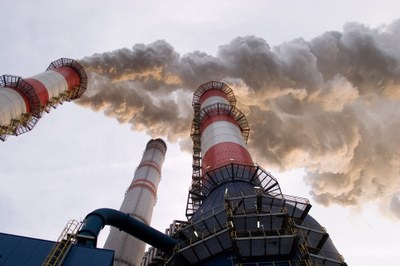All official European Union website addresses are in the europa.eu domain.
See all EU institutions and bodiesBy improving air, water, and soil quality and limiting pollution released to nature, the EU has significantly contributed to enhancing human health in the last five decades. Yet, many vulnerable groups continue to be impacted by environmental degradation and climate change. Further improvements can help keep Europeans healthier and better equipped to cope with climate change impacts.
A healthy and pollution-free nature allows Europeans to live longer and healthier lives. But despite significant progress, harm to the environment and a changing climate continue to affect public health.
Climate change is also aggravating the health effects of extreme weather events, such as heatwaves and flooding. And these effects are far from equal across the EU. Some groups, like low-income communities, the elderly, and children, have a much higher chance of suffering the consequences of an unhealthy environment and climate change.
The EU’s Zero Pollution Action Plan aims for pollution levels that are no longer considered harmful to our health and ecosystems. Other initiatives under the European Green Deal also aim to reduce exposure to pollution and its health impacts.
When it comes to the transition towards safer and more sustainable chemicals, although it is progressing in some areas, in others it is just beginning. This is the finding of a first, joint Europe-wide assessment of the drivers and impact of chemical pollution by the European Environment Agency (EEA) and the European Chemicals Agency (ECHA)

How does water monitoring help to fight antibiotic resistance?
EEA and Eionet carried out the first study in Europe to understand how surface-water monitoring can better track antimicrobial resistance (AMR). Since human and veterinary antibiotic use remains the main driver of AMR, understanding its spread in rivers and lakes is a priority under the One Health agenda.
Which AMR genes and bacterial indicators already show worrying trends in Europe’s waters? And what do we still need to know to harmonise monitoring across Europe?
How is the quality of the environment where you live and how does it affect you?

Progress on 2030 zero-pollution targets but stronger action is needed
The monitoring and outlook assessment, jointly published by the European Commission's Joint Research Centre and the EEA, provides an overview of the EU's work to meet the 2030 zero pollution targets.
EU policies have contributed to reducing air pollution, pesticide use and plastic litter at sea, according to the assessment. However, pollution levels are still too high, in particular from harmful noise, microplastic realeases into the environment, nutrient pollution and waste generation.
The EEA has also developed a monitoring assessment dashboard to provide an overview of key pollution trends and progress towards ero-pollution targets.
What is the One Health approach?
Addressing threats to health and well-being requires implementing a One Health approach, recognising the interdependence of people, animals, plants and ecosystems. Applying such an approach can reduce the incidence and societal costs of disease outbreaks and other health threats. At the same time, the One Health approach can help reduce human pressures on the environment.
The EEA is working with the European Centre for Disease Prevention and Control (ECDC), European Chemicals Agency (ECHA), European Food Safety Authority (EFSA) and European Medicines Agency (EMA) to ensure that scientific advice by EU agencies is increasingly integrated and aligned with the One Health approach. Since 2023, this collaboration has been further strengthened by the establishment of a cross-agency task force on One Health.

Dive deeper
More information
Other topics you might be interested in:
External links:
- World Health Organization One Health





